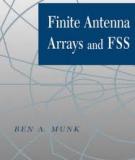Tài liệu Thư viện số
- Công nghệ thông tin (2019 )
- Điện tử viễn thông (1133 )
- Quản trị kinh doanh (1305 )
- Kế toán (1003 )
- Môi trường (968 )
- Du lịch (861 )
- Kiến trúc (424 )
- Xây dựng (1082 )
- Ngoại ngữ (302 )
- Y dược (1391 )
- Khoa học tự nhiên (874 )
- Khoa học xã hội (514 )
- Lý luận chính trị (573 )
- Sau đại học (243 )
- Tài liệu tham khảo khác (252 )
Danh mục TaiLieu.VN
- Mẫu Slide Powerpoint
- Luận Văn - Báo Cáo (344720)
- Kinh Doanh Marketing (65512)
- Kinh Tế - Quản Lý (48934)
- Tài Chính - Ngân Hàng (55898)
- Công Nghệ Thông Tin (142209)
- Tiếng Anh - Ngoại Ngữ (47066)
- Kỹ Thuật - Công Nghệ (134345)
- Khoa Học Tự Nhiên (107174)
- Khoa Học Xã Hội (82451)
- Văn Hoá - Nghệ Thuật (54408)
- Y Tế - Sức Khoẻ (173915)
- Nông - Lâm - Ngư (62504)
- Kỹ Năng Mềm (29016)
- Biểu Mẫu - Văn Bản (27610)
- Giải Trí - Thư Giãn (51994)
- Văn Bản Luật (198854)
- Tài Liệu Phổ Thông (402015)
- Trắc Nghiệm Online (213578)
- Trắc Nghiệm MBTI
- Trắc Nghiệm Holland
Finite Antenna Arrays and FSS
Why did I write this book?
The approach to engineering design has changed considerably over the last decades. Earlier, it was of utmost importance to first gain insight into the physics of the problem. You would then try to express the problem in mathematical form. The beauty here was, of course, that it then often was quite simple to determine the location of the extreme values such as the maxima and minima as well as nulls and asymptotic behavior. You would then, in many cases, be able to observe which parameters were pertinent to your problem and in particular which were not. It was then followed by actual calculations and eventually by a meaningful parametric study that took into account what was already observed earlier. The problem with this approach was, of course, that it required engineers and
scientists with considerable insight and extensive training (I deliberately did not say experience, although it helps). However, not everyone that started down this road would finish and not without a liberal dose of humiliation. It is therefore quite understandable that when the purely numerical approaches appeared on the scene, they soon became quite popular. Most importantly, only a minimum of physical insight was required (or so it was thought). The computers would be so fast that they would be able to calculate all the pertinent cases. These would then be sorted out by using a more or less sophisticated optimization scheme, and the results would be presented on a silver platter completely untouched by the human mind.
The approach to engineering design has changed considerably over the last decades. Earlier, it was of utmost importance to first gain insight into the physics of the problem. You would then try to express the problem in mathematical form. The beauty here was, of course, that it then often was quite simple to determine the location of the extreme values such as the maxima and minima as well as nulls and asymptotic behavior. You would then, in many cases, be able to observe which parameters were pertinent to your problem and in particular which were not. It was then followed by actual calculations and eventually by a meaningful parametric study that took into account what was already observed earlier. The problem with this approach was, of course, that it required engineers and
scientists with considerable insight and extensive training (I deliberately did not say experience, although it helps). However, not everyone that started down this road would finish and not without a liberal dose of humiliation. It is therefore quite understandable that when the purely numerical approaches appeared on the scene, they soon became quite popular. Most importantly, only a minimum of physical insight was required (or so it was thought). The computers would be so fast that they would be able to calculate all the pertinent cases. These would then be sorted out by using a more or less sophisticated optimization scheme, and the results would be presented on a silver platter completely untouched by the human mind.
Từ khóa: Finite Antenna Arrays, engineering design, mathematical form, kỹ thuật thiết kế, thiết kế điện tữ, công nghệ điện tử
383 p trinh 09/11/2012 186 1


